Boyfriend Dungeon Review: Entering the Arena
Boyfriend Dungeon, a new Kickstarter-backed indie release by Kitfox Games, oozes thoughtfulness from the get-go.
The opening menu pops up with a warning that the game includes modes of infatuation including people hitting on you and perhaps even stalking. It tells you before you start that there’s supportive texts from a character called “Mom”—is that OK, or should those be disabled? There’s a character creator that has turbans and headscarves unlocked from the start (something I’ve never seen before). It also allows you to select the character’s pronouns, which, by the way, won’t stop you from being able to date anyone in the game. In this world, love is open and free and generous and kind, and some people can turn into types of swords.
Yes. Swords.
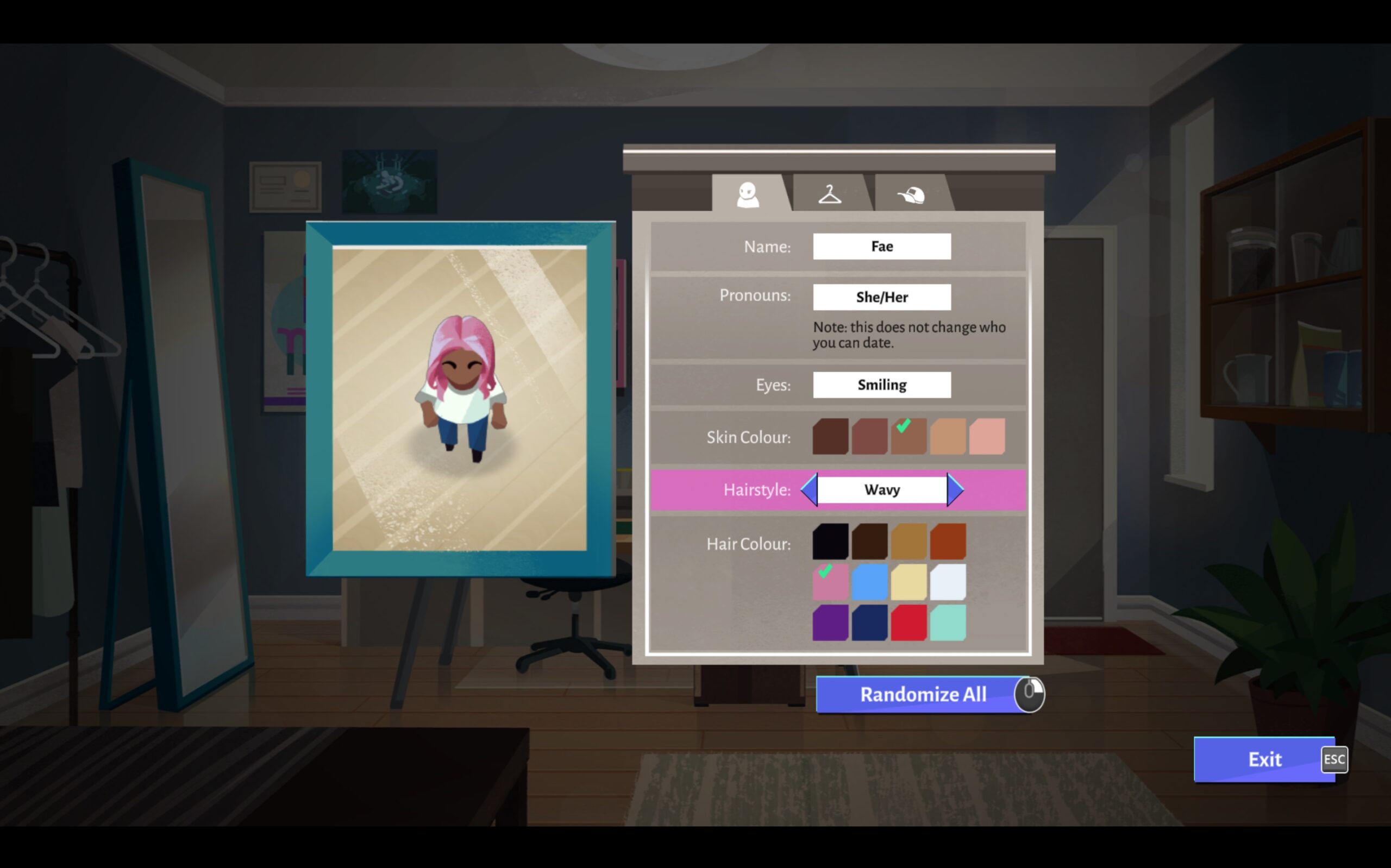
Meet the Contenders
You play a character of your own naming (I chose Fae) who moves to a town called Verona Beach for the summer. You’ve never before dated or “dunj’d” (the game’s shorthand for going into local dungeons—like the D&D kind, complete with monsters). Your cousin Jesse offers to help you learn the ropes of both.
From there, you meet a wide cast of interesting, beautifully drawn and acted characters. Some townspeople you’ll build relationships with, like Jesse, and others are folks you’ll see for a passing second. (There’s a ridiculously good-looking restaurant manager I only got to see once?!?!)
Not everyone can turn into a weapon; in terms of culture, it seems like the equivalent of being a Bender in the Avatar universe. Those who are weapon-people can accompany you as their “wielder” into the dungeons, and have their own styles of combat, boons you can earn the more you get to know them, and unique quips they’ll share on the journey.
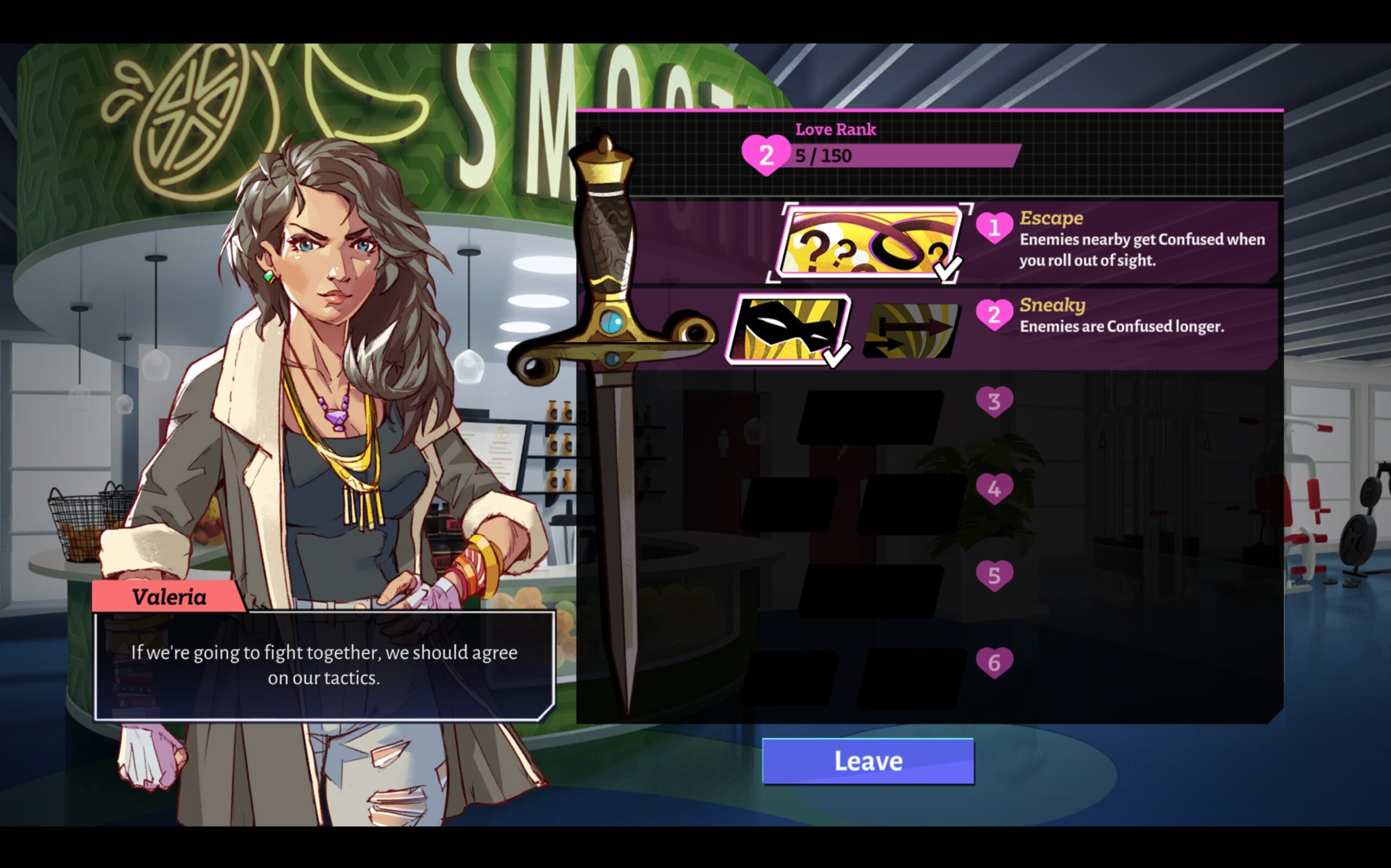
All told, there are several “sword” (technically not all swords) “boyfriends” (not all boys or boyfriends) you can recruit and build relationships with. Spend enough time with one, and you’ll increase their Love Rank (Boyfriend Dungeon’s version of experience levels).
I assumed the gameplay would get stale, and that Kitfox would inevitably run out of ways to make different swords fun to play with, but I found myself impressed. Each weapon has a distinctly different combat style that made me adjust how I played. Similarly, the skill upgrades for each fighter are cleverly aligned to their personalities: One who’s good at verbal wordplay has a parrying ability to defend against attacks, while another, a party animal who takes advantage of others, has a “bleeding” effect on enemies.
These characters are equally unique in human form—each has lovely voice acting and gorgeous artwork. I audibly gasped when a dagger transformed into the beautiful Valeria. I don’t want to ruin the surprises, so I won’t go into describing them, but please trust that everyone’s a delight and worth getting to know.
Sharpening the blade
Boyfriend Dungeon is just straight up FUN. I can’t remember the last time I played a game where the only mood it gave me for most of the time was “good.” The game has two main modes: going on dates, and going into dungeons.
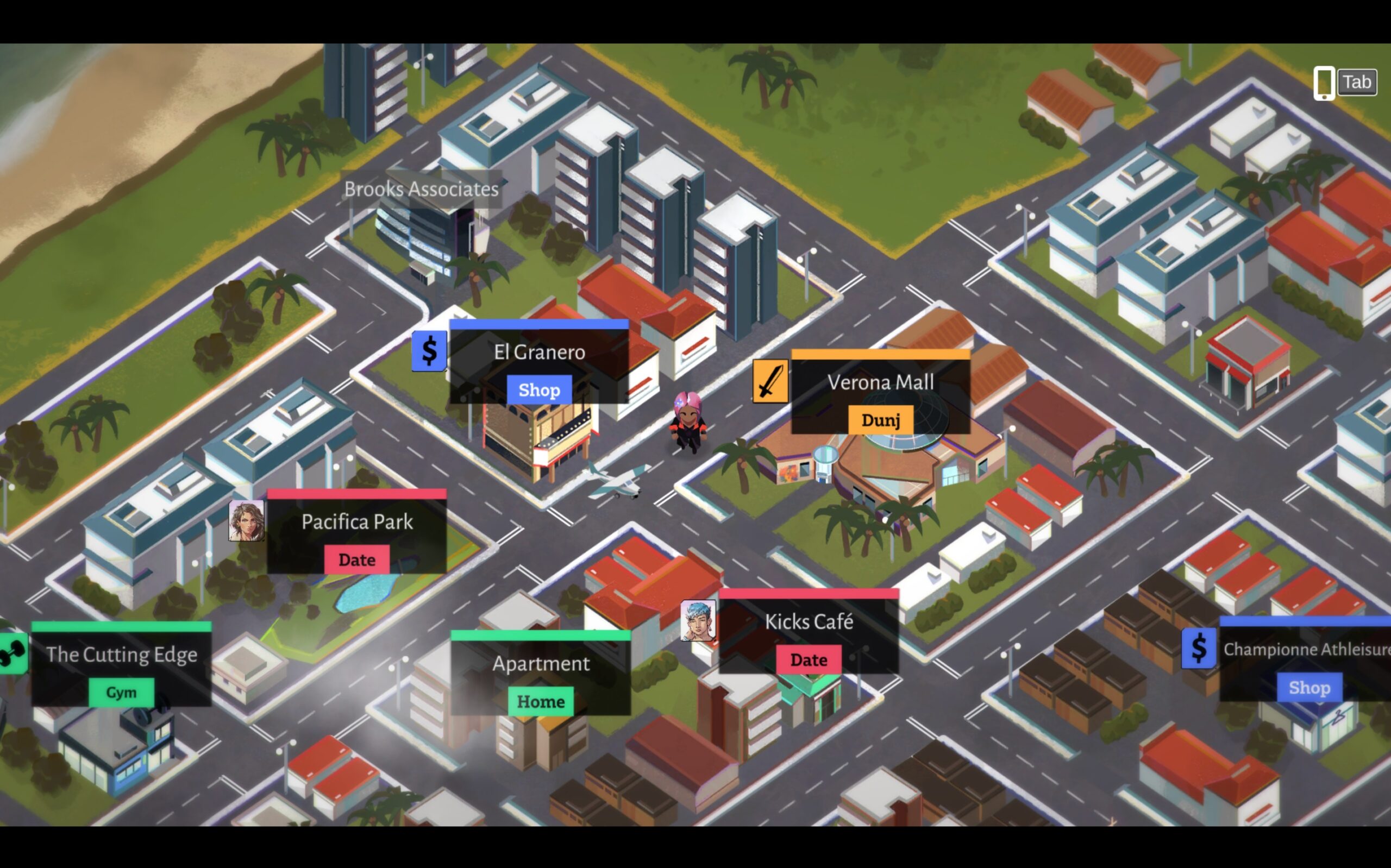
Gameplay in Boyfriend Dungeon
You’ll “die” in the dungeons, but plot-wise, Boyfriend Dungeon is very lowkey (a cute ambulance brings you and your sword home) and there are no penalties. You just get up and do it again. As opposed to series like Persona, there’s no in-game calendar or clock system; rather, events are triggered as you progress through story arcs with each of your weapons. So, while time does pass in the game, you can retry dungeons and take as much time as you like.
This is important, as dungeons are how you build up relationships with the weapons and also advance the game’s story. The player character also evolves in ranks over time, gaining more base HP and collecting helpful inventory items along the way.
Like with any game that has you juggling competing tasks, you’ll hit a comfortable rhythm with Boyfriend Dungeon. Each time you complete a bout of dunj’ing or dating, you return to your apartment; you can then choose what to do next via a map screen.
Your standard rhythm will likely be to alternate between going on rounds of combat in a dunj until you faint, and going on dates with your sword folx. (Dates can also be friend dates if you choose not to pursue romantic paths.) Ultimately, though, the choice is up to you. There were some times when I just wanted to slash my way through a bunch of cell phones with wings, and didn’t “date” anyone for days, and other times when I just wanted to chat with interesting people.
Dating in Boyfriend Dungeon
As far as the dates, the game’s aesthetic feels fresh and fun. It reminds me of the style of a 2017 indie hit: queer single dad interactive novel Dream Daddy. The below screenshot was from an event with one partner that made me audibly snort. It’s clear the developers truly enjoyed making this game, which is a nice sensation.
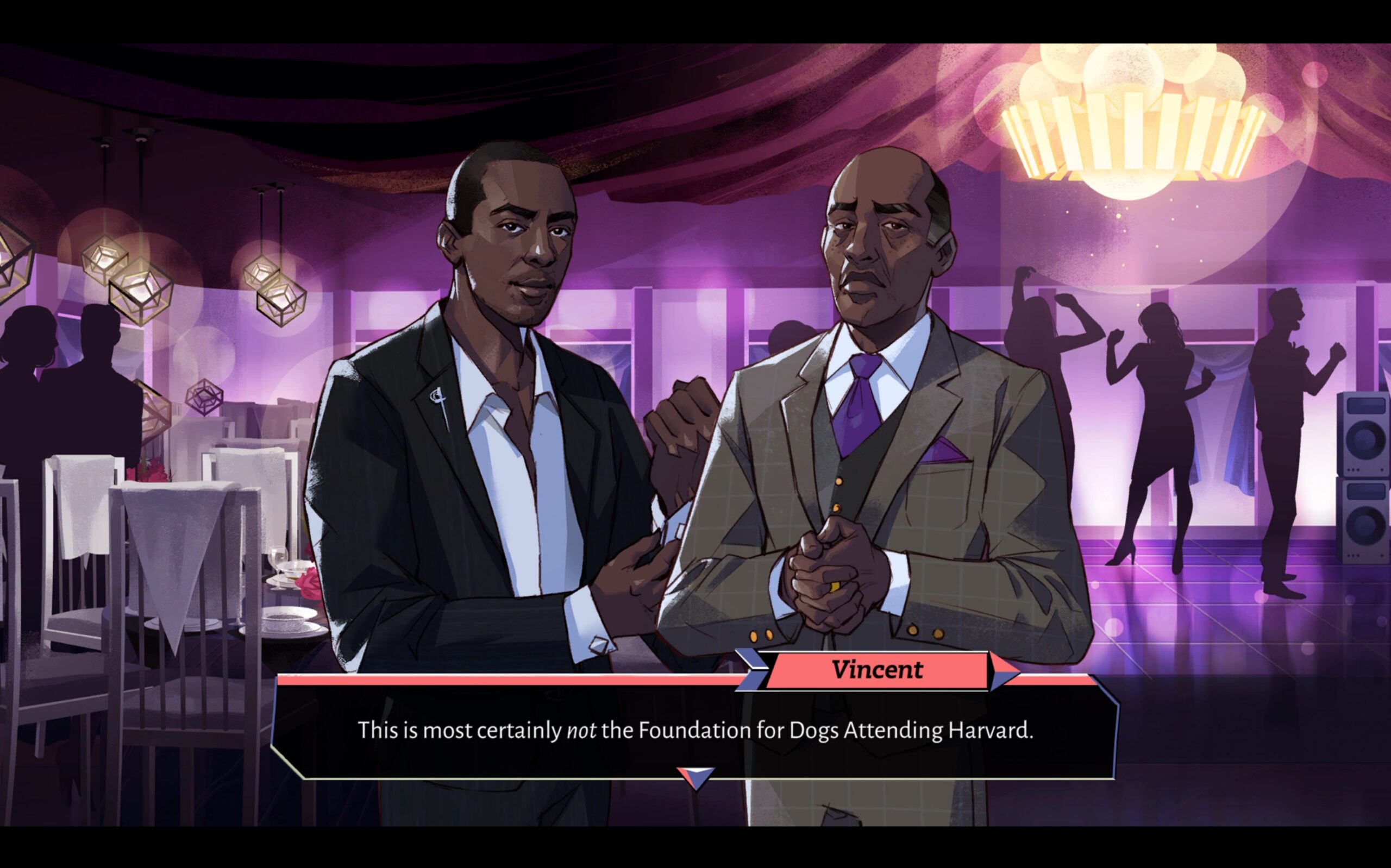
Each partner has six Love Ranks you can unlock over the course of the game. The main relationship mechanics are similar to that of any dating interactive novel: Your conversations have multiple response choices, with each granting you positive, negative, or neutral points with the person you’re talking to. By setting up your character as someone who has “never dated,” the game gives you opportunities to be awkward, to be blunt, to be yourself, to be adventurously flirty.
You are never forced into a romantic relationship and can opt to keep things platonic with any potential relationship. You can choose to be poly or monogamous. Romantic interactions always include an exchange of consent, both from you as the player and from your crush, which is refreshing in the world of relationship games.
Combat in Boyfriend Dungeon
Because you have to level up “intimacy points” in combat in the dunj in order to go on a date (and, likewise, you can’t unlock new combat skills if you don’t meet up with your weapon), the game establishes a graceful balance to its gameplay.
The combat is fun (aside from one small drawback I’ll get to in a minute), and smooth. It checks the boxes for the dungeon crawler formula: slashing through hordes, revealing the map as you go, breaking open crates for treasures, getting power-ups, and choosing skill upgrades. Perhaps one of the devs’ best choices is that you can change weapons by floor of the dungeon, allowing you to maximize experience points during a run.
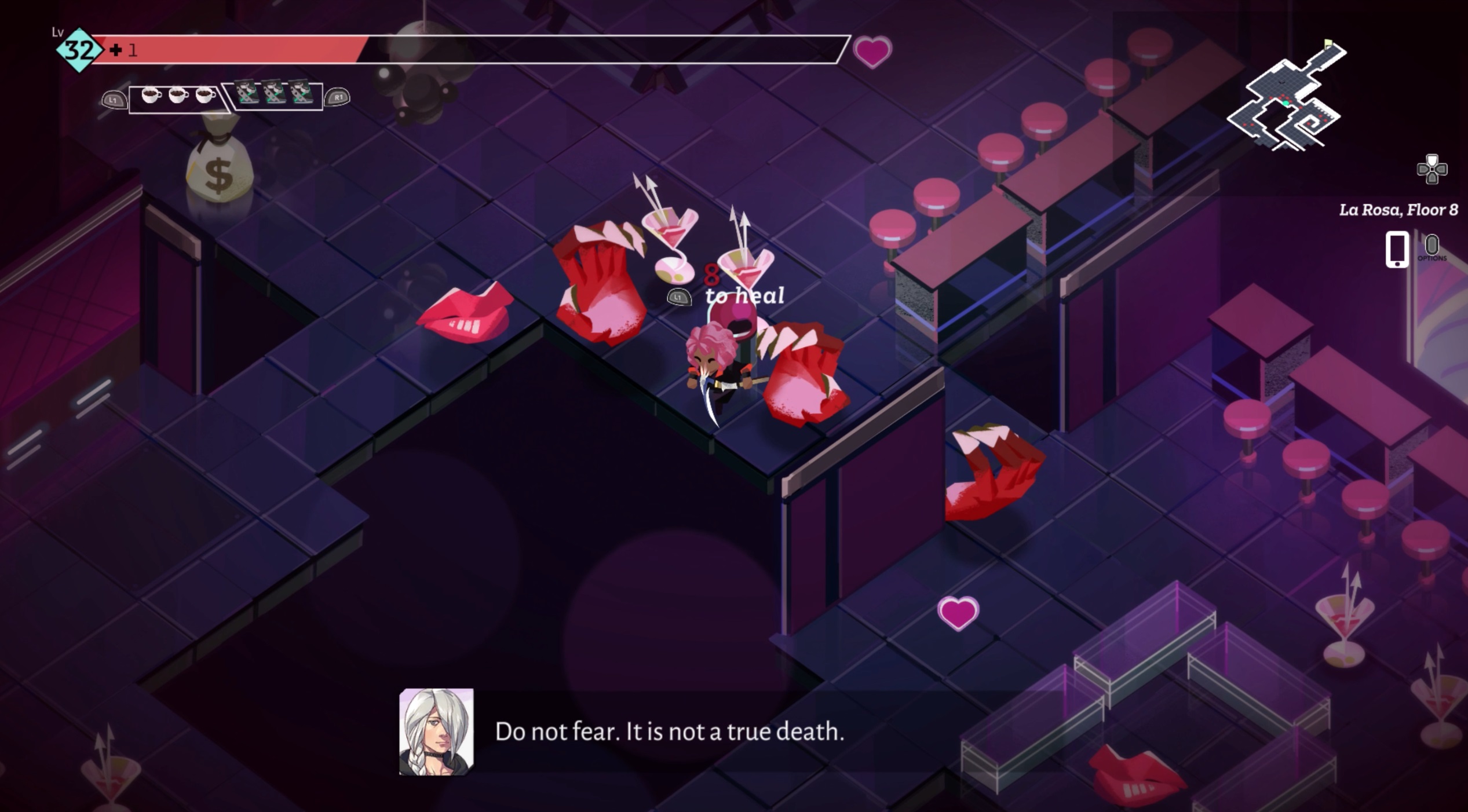
Dungeon levels will have a randomly generated layout, which can include a “hangout” area (like the above). The first dungeon is a mall, and so hangouts include an indoor ice skating rink, an ice cream stand, and a group of massage chairs, among others. Consider these the equivalent of a room with health fountains, but here you get to take a break by getting to know your partner better, giving them a gift, and, yeah, getting some health boosts. So, if you have a fave sword and you’re not trying to min-max experience points, you may just enjoy spending quality time with your main squeeze.
The conceit of the game is that dungeons and the monsters in them are built around your fears, infested by monsters that resemble deep-seated concerns your character holds. One of my favorite “swords” commented as I progressed deeper through levels, “I think it’s so brave that you keep coming here to face your fears.” It made me low-key really emotional.
A Chip in the Armor
I was provided a review code for Steam, and while I’m happy to have gotten a chance to play this game, I personally wouldn’t recommend it on a computer. The controls for moving around the dungeon are mapped to the QWERTY keyboard and arrow keys, but combat is mapped to left and right mouse keys, and aim is based on where your mouse was last pointing.
I played the first few hours of the game on a laptop with a touchpad, and you can probably guess how bad I was at combat, which unfortunately is a key component of a game called Boyfriend Dungeon. Even with remapped keys, I still wasn’t great.
For the second half of my playthrough, I was able to hook up a PlayStation 4 controller, and it was a game-changer. Combat became a delight, versus a groan-inducing frustration simulator. Boyfriend Dungeon plays great with a controller, so consider it on Nintendo Switch or Xbox Game Pass, or make sure you’ve got something to hook up for Steam. I think a game should be not just playable, but truly accessible on any platform it’s on, regardless if you have the right accessories. So the poor PC/Mac controls were an unfortunate stumble for an otherwise strong experience.
Additionally, you may have read about some of the discourse around the game’s darker themes, perhaps even my own essay response to it. I don’t think this meta conversation should discourage you from playing the game, but if you’re concerned, consider reading these links before you give it a go.
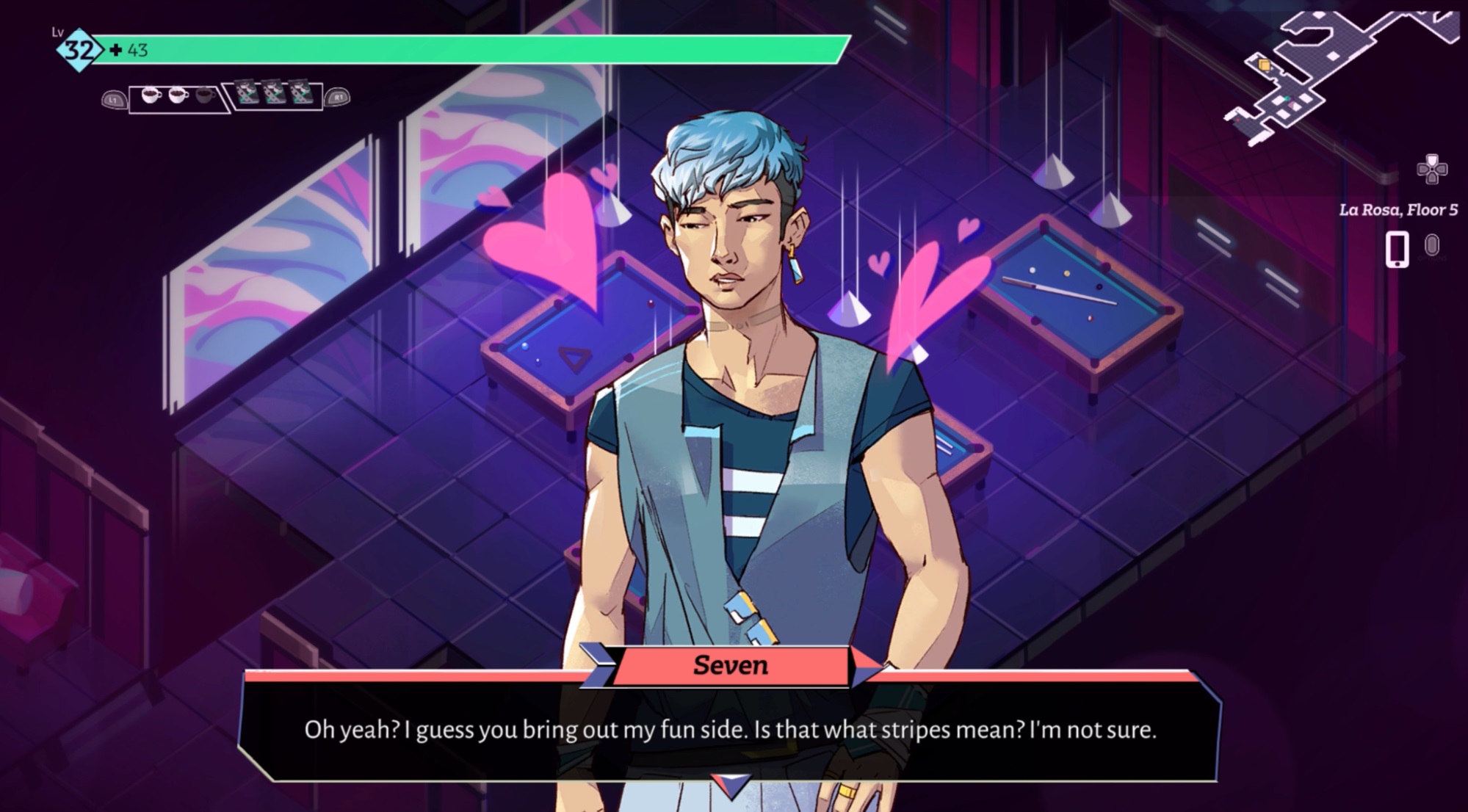
Excalibur
Is Boyfriend Dungeon a Good Game?
Boyfriend Dungeon is a great game, in my opinion. It’s fun and funny, sweet, joyful, and caring. It’s heartwarming. It’s a nice place to be, even with the darkness lurking at the edges. Just like life, the hope is that we create and maintain our own light even as so many horrible things in the world exist around us (some near, some far). In the whole game I found only one textual error and even then, it wasn’t a true typo: Someone was referred to as their weapon type and not their human name. The version I played was glitch-free, especially impressive for an indie.
I think part of why I’m so fond of Boyfriend Dungeon is that it’s just really… playable. That seems like a dumb thing to say, but so many games lately have demanded too much of my time without being good enough to do so. My playthrough, in which I maxed out all the sword relationships and completed all dungeons, came in at 7.5 hours, and the first few of those were without a controller. The pacing is smooth, and there are opportunities to speed up your playthrough (giving gifts to quickly upgrade your sword relationships) or slow down (there is absolutely no rush to go on a date with a character, and you can replay procedurally generated floors of each dungeon).
Final Thoughts
Boyfriend Dungeon innovates in the realm of story and character, rather than with its gameplay systems, and I think it’s to the game’s benefit. Not every action game needs to reinvent the wheel in terms of mechanics. The experience is straightforward, and allows the spotlight to be on the fun characters and energizing gameplay. The combat, movement, progression systems, and menus make sense. I wish that wasn’t such a big deal to say these days but, hey, it is. The colors are fun. The music is cool but not annoying. The dialogue is cute and not too dorky. Again, just really… playable.
I’d like to think there’s a future for the game; the creativity of the dungeon’s themes and fresh gameplay positions Boyfriend Dungeon well for DLC opportunities (Kitfox, plz).
I might even buy Boyfriend Dungeon for myself on my Switch so I can break out a few dunjs on the go. I hope you try it out, and when you do, tell me who your fave sword is, and I’ll tell you mine.
Score: 9.5/10
Review code provided by the publisher.
Amanda Tien (she/her or they) loves video games where she can pet dogs, punch bad guys, make friends, and have a good cry. She started writing for the site in 2020, and became an editor in 2022. She enjoys writing about mystery games, indies, and strong femme protagonists.
Her work has also been published in Unwinnable Monthly (click here to read her cover feature on Nancy Drew games), Salt Hill Journal, Poets.org, Litro Magazine, Public Books, and more. She was the Co-Founder and Editor-in-Chief of Columbia University's Culinarian Magazine, and served for two years as the Managing Editor of Aster(ix) Literary Journal.
She recently graduated with a MFA (Master of Fine Arts) in Creative Writing from the University of Pittsburgh. Her writing, art, graphic design, and marketing work can be viewed at www.amandatien.com.
She does not post a lot on social, but you can find her on X and on Instagram.








